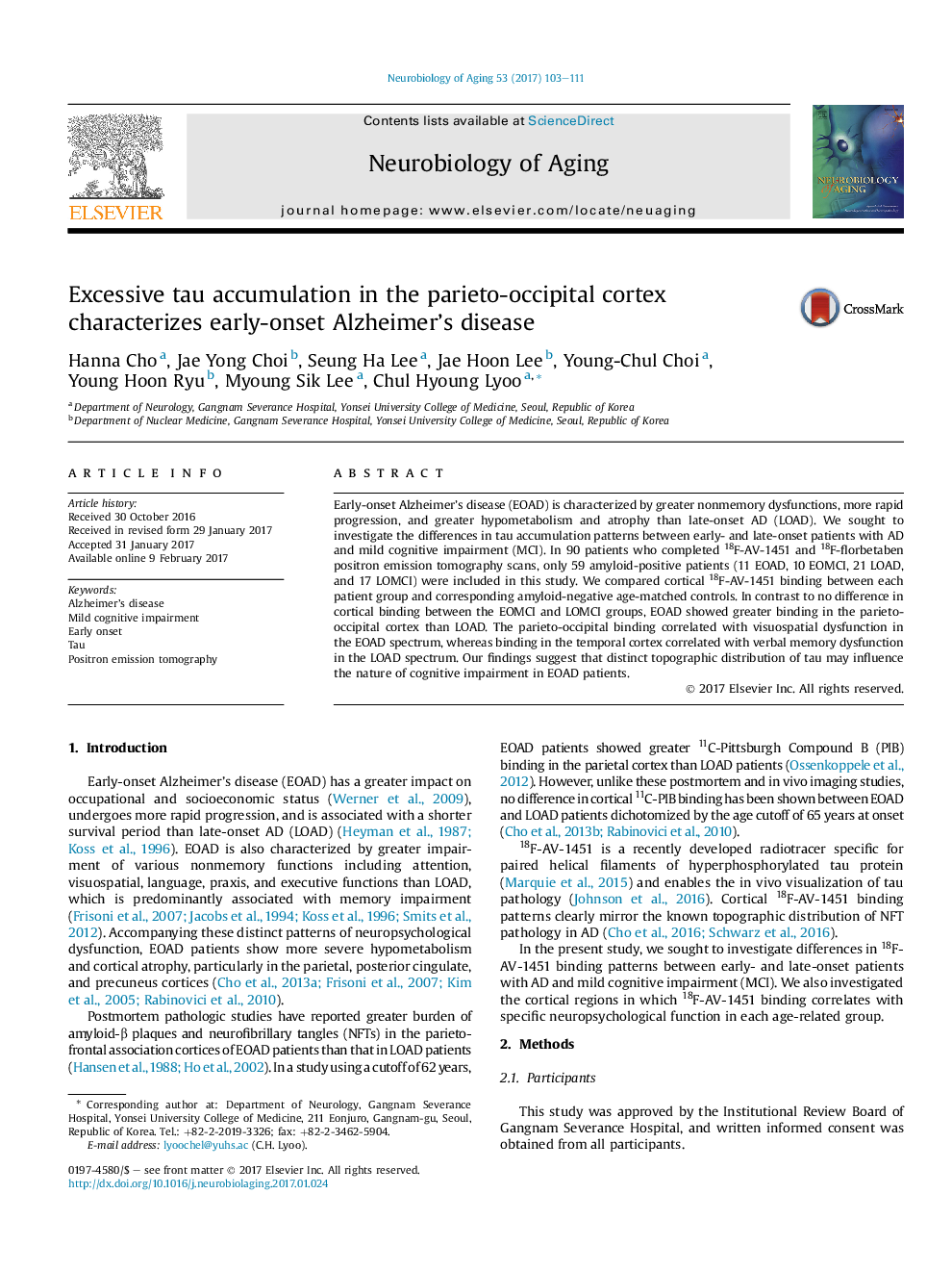| Article ID | Journal | Published Year | Pages | File Type |
|---|---|---|---|---|
| 4932613 | Neurobiology of Aging | 2017 | 9 Pages |
Abstract
Early-onset Alzheimer's disease (EOAD) is characterized by greater nonmemory dysfunctions, more rapid progression, and greater hypometabolism and atrophy than late-onset AD (LOAD). We sought to investigate the differences in tau accumulation patterns between early- and late-onset patients with AD and mild cognitive impairment (MCI). In 90 patients who completed 18F-AV-1451 and 18F-florbetaben positron emission tomography scans, only 59 amyloid-positive patients (11 EOAD, 10 EOMCI, 21 LOAD, and 17 LOMCI) were included in this study. We compared cortical 18F-AV-1451 binding between each patient group and corresponding amyloid-negative age-matched controls. In contrast to no difference in cortical binding between the EOMCI and LOMCI groups, EOAD showed greater binding in the parieto-occipital cortex than LOAD. The parieto-occipital binding correlated with visuospatial dysfunction in the EOAD spectrum, whereas binding in the temporal cortex correlated with verbal memory dysfunction in the LOAD spectrum. Our findings suggest that distinct topographic distribution of tau may influence the nature of cognitive impairment in EOAD patients.
Related Topics
Life Sciences
Biochemistry, Genetics and Molecular Biology
Ageing
Authors
Hanna Cho, Jae Yong Choi, Seung Ha Lee, Jae Hoon Lee, Young-Chul Choi, Young Hoon Ryu, Myoung Sik Lee, Chul Hyoung Lyoo,
